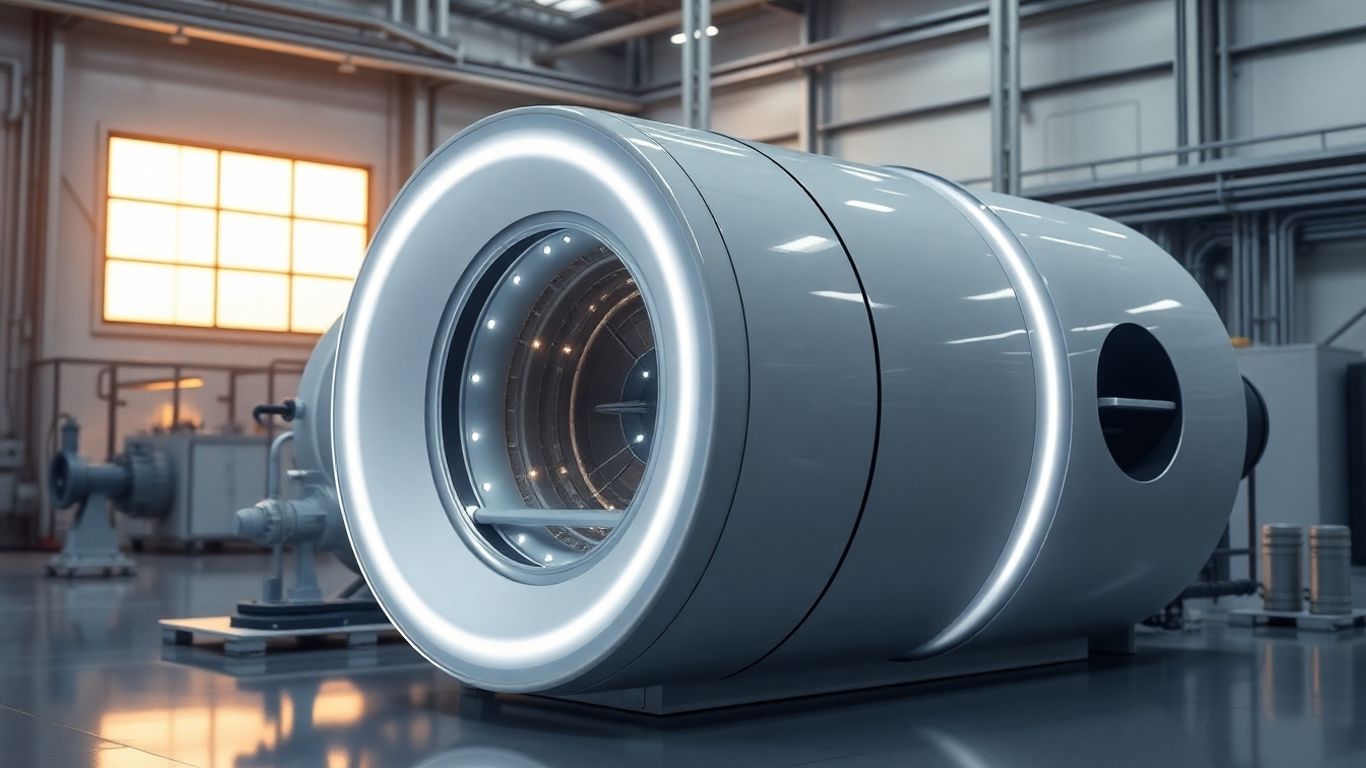The United Kingdom has selected Rolls-Royce SMR as the preferred technology provider for its ambitious small modular reactor (SMR) program. This significant decision, announced by Great British Nuclear (GBN), marks a pivotal moment for the UK’s nuclear energy future, aiming to bolster domestic capabilities and create thousands of skilled jobs.
Key Takeaways
- Rolls-Royce SMR’s 470 MW factory-built reactor design has been chosen.
- The UK government is pledging over £2.5 billion for the SMR program.
- The initiative aims to create up to 3,000 new skilled jobs.
- The first SMR plants are targeted for in-service dates in the mid-2030s.
A New Era for British Nuclear Power
Great British Nuclear (GBN) has chosen Rolls-Royce SMR as the preferred technology provider in the UK’s small modular reactor (SMR) competition. This decision, following a two-year international selection process, signifies that the UK’s next generation of nuclear power stations will be designed and built by a British company. Rolls-Royce SMR’s chief executive, Chris Cholerton, stated that deploying three of their units will drive domestic growth by creating thousands of highly skilled, well-paid jobs and supply chain opportunities.
Government Investment and Job Creation
The government is pledging over £2.5 billion for its overall SMR program, a move expected to support up to 3,000 new skilled jobs and power the equivalent of approximately 3 million homes. GBN is set to sign contracts with Rolls-Royce SMR later this year, with site allocation also anticipated. The government’s commitment aligns with its industrial strategy to invest in high-growth sectors, fostering job creation and investment within the UK.
The Technology and Global Race
Rolls-Royce’s SMRs are designed for factory construction, which facilitates easier transportation, reduces completion risks, and enhances certainty in construction schedules. Each plant will have an output of 470 MW. The UK’s selection of Rolls-Royce comes as other nations, like the US, are also making significant investments in SMR technology. Experts caution that the UK must move swiftly to maintain pace in the global race to develop and deploy SMRs, with a target of connecting projects to the grid by the mid-2030s.
Broader SMR Ambitions in the UK
Beyond the Rolls-Royce selection, other developers are also outlining ambitious plans. X-energy and Centrica aim to build up to 12 advanced modular reactors (AMRs) in Hartlepool, with a broader UK-wide program targeting 6 GW of nuclear power. Holtec is collaborating with EDF and Tritax on plans for advanced data centers powered by SMRs at the former Cottam coal-fired power station. These initiatives highlight a significant push towards diversifying the UK’s energy infrastructure with smaller, more flexible nuclear technologies, with many projects aiming for mid-2030s operational dates and relying on private funding alongside government support.












